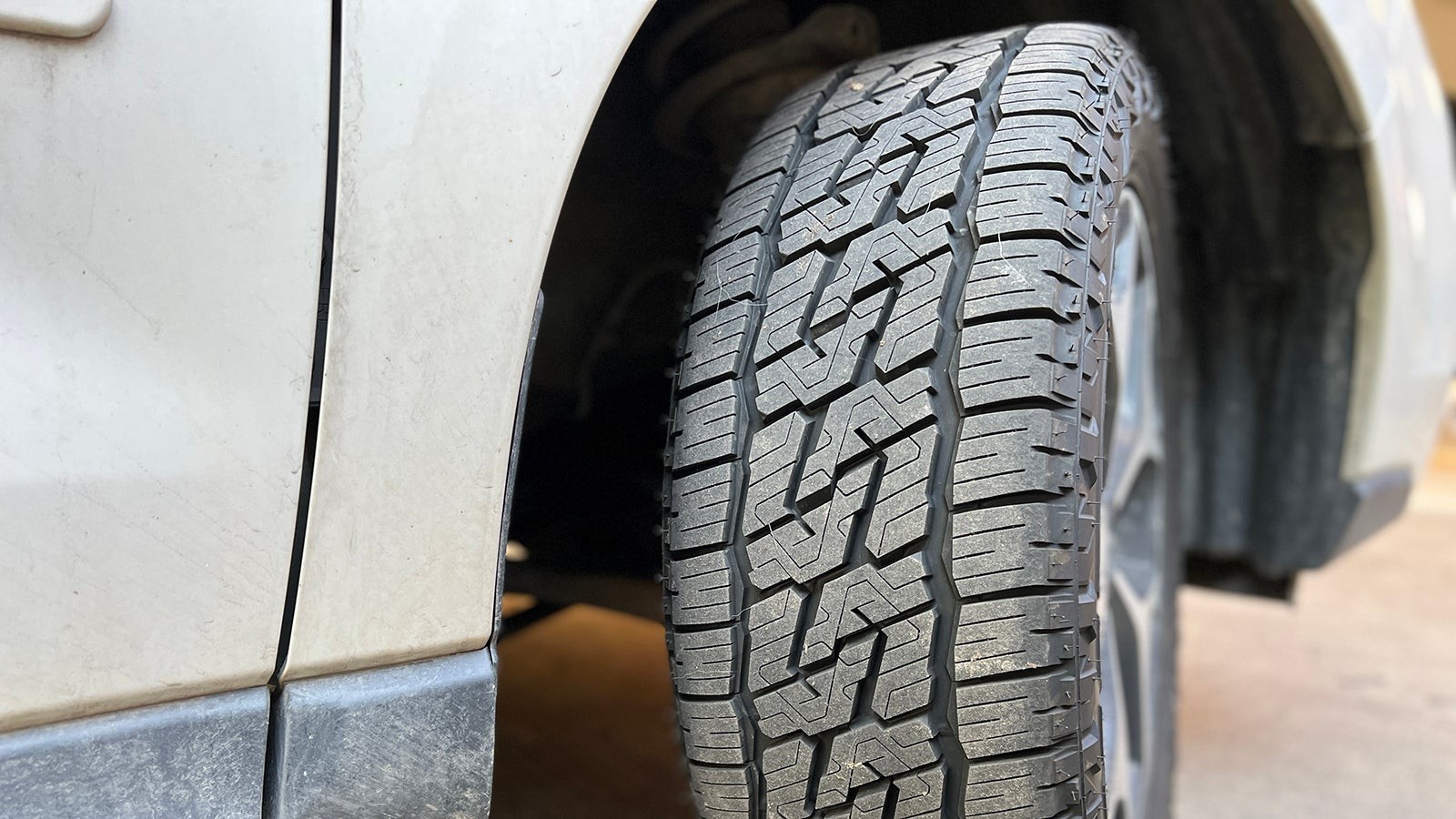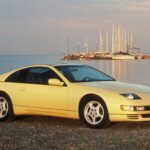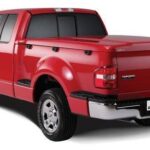If you drive an SUV and live in an area with cold winters, switching to winter tires is not just a good idea—it’s essential for your safety and the safety of others on the road. Winter tires are engineered to maintain flexibility in freezing temperatures, effectively displace water from icy surfaces, and deliver superior grip on snow and ice. But with so many options available, how do you choose the top rated winter tires for your SUV? Through rigorous testing and real-world experience in harsh winter conditions, we’ve identified the clear frontrunners to equip your SUV this winter.
Why Winter Tires are Crucial for SUVs
SUVs, with their higher center of gravity and often heavier weight compared to sedans, demand specialized tires for optimal winter performance. While you might be tempted to rely on all-season tires, especially if your SUV has all-wheel drive, these tires simply aren’t designed for severe winter conditions. All-season tires begin to lose their grip below 45 degrees Fahrenheit, even on dry pavement. For SUVs navigating icy driveways, snow-covered streets, and slushy highways, dedicated winter tires are non-negotiable.
An all-terrain or mud-terrain tire, while capable in deep snow, will compromise safety on ice and slush—conditions often encountered during typical winter commutes. The primary function of winter tires is to provide safety in these challenging conditions. No advanced vehicle system, including anti-lock brakes or all-wheel drive, can compensate for inadequate tires. Remember, your tire choice impacts not only your safety but also the safety of everyone sharing the road. Equipping your SUV with top rated winter tires is a responsible decision for yourself and your community.
How Top Rated Winter Tires Enhance SUV Performance in Winter
Modern Top Rated Winter Tires For Suvs are not just about deeper treads. They incorporate a range of advanced technologies to maximize grip and control in winter. The rubber compound itself is formulated to remain pliable in very low temperatures, allowing the tire to conform to the road surface and maintain contact. This specialized rubber is also microscopically porous, a crucial feature for icy conditions. When your SUV’s weight melts a thin layer of water on ice, creating a slippery surface, winter tires actively wick away this water. This process ensures the tire maintains direct contact with the ice itself, and the flexible rubber can effectively find grip.
Furthermore, siping—the small, zig-zagging slits cut into the tread blocks—plays a vital role in enhancing traction. These sipes work by creating additional biting edges that mechanically interlock with the surface, providing superior grip on ice and packed snow. The tread pattern of winter tires also features larger voids or grooves. These are specifically designed to grab and hold onto loose snow, maximizing traction in deeper snow conditions, while also efficiently channeling away water and slush to reduce hydroplaning. These combined features are what differentiate top rated winter tires and make them indispensable for SUV winter driving.
Decoding Winter Tire Symbols: M+S and 3PMSF
When shopping for winter tires for your SUV, you’ll encounter two markings on the tire sidewall intended to indicate winter capability: M+S and 3PMSF. However, it’s important to understand what these symbols actually mean and their limitations.
The M+S (Mud and Snow) stamp is based solely on the ratio of void-to-lug in the tire’s tread pattern. It doesn’t involve any performance testing and doesn’t guarantee any actual winter performance benefit. Essentially, many all-season tires also carry this designation, making it unreliable for identifying true winter tires.
The Three-Peak Mountain Snowflake (3PMSF) symbol is a more reliable indicator. It signifies that the tire has passed a performance test on snow. However, it’s crucial to note that this test is conducted by the tire manufacturer itself, not an independent third party, and the test itself is quite basic. To achieve the 3PMSF rating, a tire only needs to demonstrate acceleration performance on packed snow that is just ten percent better than a reference all-season tire from the early 1990s. Braking and cornering traction, equally crucial in winter, are not part of this test.
Therefore, while the 3PMSF symbol is a better indicator than M+S, it’s not a definitive guarantee of top-tier winter performance. This is why choosing winter tires for your SUV from reputable brands known for their winter tire technology is paramount. Rely on expert reviews and testing, like this guide, to find the truly top rated winter tires.
Studded vs. Studless Winter Tires for SUVs
A key decision when selecting winter tires for your SUV is whether to choose studded or studless tires. Studded tires feature small metal studs embedded in the tread, designed to dig into ice for enhanced grip. However, they also come with drawbacks.
Studded tires are primarily designed for environments where roads are consistently ice-covered, such as in Scandinavian countries where roads are often not plowed to bare pavement. In most of North America, roads are regularly plowed, meaning SUV drivers will frequently encounter bare pavement even in winter. Driving studded tires on bare pavement leads to rapid stud wear. Studies have shown that the braking performance of studded tires can degrade significantly after just 1,000 miles of driving on dry pavement. Given that most drivers will encounter far more than 1,000 miles of bare pavement during a winter season, stud wear becomes a significant concern.
Furthermore, studs damage road surfaces, contributing to increased road maintenance costs. Studded tires are also considerably noisier than studless winter tires, which can impact driving comfort.
While studded tires might seem appealing for maximum ice grip, studless winter tires have made significant advancements. Top brands like Nokian have invested heavily in studless winter tire technology, using advanced rubber compounds and tread designs that offer exceptional ice and snow grip without the drawbacks of studs. Nokian, a leading proponent of studded tires in the past, now offers both studded and studless versions of many of their winter tire models, recognizing the benefits of studless for most drivers. Unless you live in an area with consistently unplowed, ice-covered roads, studless winter tires are generally the better choice for SUVs, offering a balance of excellent winter performance and on-road comfort and durability.
Tire Chains: A Last Resort for SUVs, Not a Replacement for Winter Tires
Another option sometimes considered for winter driving is tire chains. However, chains are not a practical or safe substitute for winter tires for SUVs in most situations. Chains are primarily effective in deep snow and offer only marginally better traction than dedicated winter tires in typical winter conditions.
Fitting tire chains can be a difficult and time-consuming process, often required in freezing conditions. Improperly installed chains can damage your SUV’s tires, wheels, and even bodywork. Furthermore, chains are unsafe to use on anything other than deep snow and must be removed when driving on cleared roads.
Some regions mandate carrying chains for driving on specific, extremely hazardous mountain passes during winter. While you should always comply with such regulations, remember that winter tires enhance safety throughout your entire winter drive, not just in extreme situations where chains might be required. When road conditions are so severe that chains are necessary, driving is inherently dangerous even with them. In such cases, considering alternative plans like staying put or changing routes might be the safest approach.
While carrying chains as an emergency tool is prudent, especially for SUVs venturing into very remote areas, they should be considered a last resort. For everyday winter driving safety and performance, investing in a set of top rated winter tires for your SUV is far more effective and practical. Aggressive V-bar chains, designed for extreme traction, are available, but their use is limited to very low speeds in severe conditions due to their destructive nature and potential for vehicle damage. Many SUVs, particularly those with independent front suspension, may also lack sufficient wheel well clearance for chains, especially on the front wheels. Always verify chain compatibility with your specific SUV model before attempting to use them.
Winter Tires for Trucks, SUVs, and Crossovers: What’s the Difference?
Larger and heavier vehicles like SUVs and trucks require tires specifically designed to handle their increased weight and size, especially in winter conditions. This is particularly true for owners of full-size SUVs or modified trucks. When selecting winter tires for your SUV, it’s generally best to choose tires that closely match the size of your SUV’s original summer or all-season tires.
Some SUV and truck owners might consider “LT” (Light Truck) rated winter tires instead of “P-metric” (Passenger car) tires. Tire size designations can be complex, but online tire size calculators are readily available to help compare sizes and ensure proper fitment. While a perfect size match isn’t always essential, staying as close as possible to the original tire size helps avoid issues with vehicle clearance, maintains accurate speedometer readings, and ensures optimal handling and performance.
LT-rated tires are constructed with stronger sidewalls and different rubber compounds compared to P-metric tires. This robust construction allows LT tires to handle higher inflation pressures and heavier loads, common in SUVs and trucks. However, the stiffer construction and higher pressures of LT tires can sometimes result in a firmer ride. LT tire rubber compounds may also prioritize durability and resistance to cuts and tears on gravel roads over maximum wet pavement grip, potentially slightly reducing wet traction compared to P-metric winter tires. LT tires are often available in larger sizes suitable for trucks and lifted SUVs.
As with all-terrain tires, factors like size, weight rating, rubber compound, and construction all influence a winter tire’s suitability for your specific SUV or truck and driving needs. There’s no single performance test that can fully capture the diverse challenges winter tires for SUVs and trucks must face, highlighting the importance of choosing tires based on reputable brands and expert recommendations.
Top Rated Winter Tire Recommendations for SUVs
For most SUV and crossover drivers seeking top-tier winter performance, the Bridgestone Blizzak DM-V2 stands out as an excellent and readily accessible choice. Bridgestone pioneered modern studless winter tire technology and continues to innovate in this field. The Blizzak DM-V2 is specifically designed for SUVs and crossovers, offered in P-metric sizes that match most stock SUV tire specifications. Blizzak tires are widely available at reputable tire retailers and even warehouse clubs like Costco, making them a convenient option.
For SUV owners seeking an even higher level of winter performance, Nokian’s range of winter tires is worth considering. While potentially harder to find in specific sizes and possibly more expensive, Nokian tires are renowned for their exceptional winter capabilities. Nokian offers both studless and studded winter tires for SUVs, catering to different needs and preferences. Notably, Nokian is the only manufacturer offering true winter tires in larger 35-inch sizes, appealing to owners of modified SUVs and trucks.
For SUVs and trucks requiring LT-rated winter tires, the Bridgestone Blizzak LT is a highly reliable option. It delivers the trusted Blizzak winter performance in a robust LT construction. For studded LT winter tire needs, the Nokian Hakkapeliitta LT3 (studded) is an excellent choice, offering exceptional grip in severe ice and snow conditions.
Choosing between these top rated winter tires will depend on your specific SUV, driving conditions, and budget. However, both Bridgestone Blizzak and Nokian winter tire lines consistently rank among the best for SUVs, providing the safety and performance you need for confident winter driving.
Winter Tire Considerations for Warmer Climates and Occasional Snow
Many SUV owners living in milder climates might question the need for dedicated winter tires, especially if they only occasionally travel to snowy regions for skiing or winter recreation. If your winter driving is infrequent, or if budget is a significant constraint, there are compromise options, though they won’t match the safety of true winter tires.
For SUVs with four-wheel drive, a 3PMSF-rated all-terrain tire can offer a degree of winter capability as a compromise. The Toyo Open Country ATIII, in LT sizes if appropriate for your SUV, is a well-regarded all-terrain option with the 3PMSF rating. While all-terrain tires will require more cautious driving in severe winter conditions compared to dedicated winter tires, they can provide acceptable performance for occasional snow and ice encounters.
For all-wheel-drive crossovers, mild all-terrain tires specifically designed for crossovers represent another compromise. The Falken A/T Trail pioneered this category and remains a solid choice. The Nitto Nomad Grappler is a newer entrant that has gained popularity, combining all-terrain style with quieter on-road performance. These crossover-oriented all-terrain tires offer improved snow and light off-road capability compared to standard all-season tires while maintaining reasonable fuel efficiency and on-road comfort for lighter SUVs and crossovers. However, even with these all-terrain compromises, for optimal safety and performance in true winter conditions, especially for frequent winter driving, dedicated top rated winter tires like Blizzak or Nokian remain the best choice for your SUV.
Conclusion: Invest in Top Rated Winter Tires for SUV Winter Safety
When it comes to winter driving safety for your SUV, tires are the most critical factor. Choosing top rated winter tires is an investment in your safety, your passengers’ safety, and the safety of everyone on the road. Don’t compromise on safety with all-season or inadequate tires. Equip your SUV with dedicated winter tires from reputable brands like Bridgestone Blizzak or Nokian to experience the confidence and control you need to navigate winter roads safely. Prioritize safety this winter and make the switch to top rated winter tires for your SUV.


